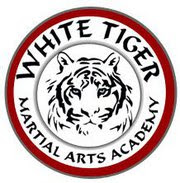This year 2024 I posted a list of my history in Competitions and their relevance to our KB Sparring and other training
As noted, these were all earlier in my career, as a young new Black Belt, training at Clubs that had a competition focus
Later, as I went through training progression in the Dojo that focussed more on the Traditional Art, and achieved my higher Dan grades, my focus shifted
As is known my later focus was more on the Street Self defence that applied to the Security work myself and my Team were doing over several years
Much later, as a Shihan Master Instructor, I moved far away from Sport Competition and it's consideration, keeping a strong orientation on STREET SD, though no longer dwelling on it as a priority, and delving deeper into the Source ARTS
SAS
Street Self Defence - ART - Sport Sparring
KARATE has been my first and most core Art, my first Black Belt, my first Competitons, my first Championship, the system that best got me through my STREET situations, and my highest Grades
Karate is in many ways not a "Martial Art" - it was never developed as a method of War the way SAMURAI and NINJA Arts were, it was always a Civilian Method of Unarmed Self Defence
Though I have listed the Competition history at the start of 2024, and we will look a bit deeper into that in our KB phase this year, our functional Sparring, there is a need to keep in mind the true purpose of KARATE as Street Self Defence, away from the Competition mind set and drilling
So now I refer to the Bubushi
The Bubishi is sometimes referred to as the bible of karate.
It is to Karate what the Go Rin No Sho, the Book Of Five Rings, is to Kenjutsu
The original purpose of the martial arts was to enable the practitioner to protect themselves in either military or civil combat
Karate is a civil tradition that was designed to enable its practitioners to defend themselves against day to day violence. Today’s Karateka also requires effective civil self-defence skills, and as the art was designed for just that purpose
There is nothing wrong with these sporting evolutions in themselves. Many people enjoy the competitive aspect of the martial arts either in the capacity of competitors or spectators, however, it must be acknowledged that many of these sporting modifications run in direct opposition to what is needed in a self-defence situation
Arm locks, leg locks, throws, takedowns, chokes, strangles etc. can all be found within the katas
The Bubishi (Wu peh chi in Chinese) was a closely guarded secret that has been handed down from master to student for generations
The Bubishi deals with two kempo styles that formed the basis of modern karate
The Bubishi consists of 32 chapters (articles) and gives instruction on fighting techniques, herbal medicine, philosophy, strategy, pressure points, training principles, etiquette and the history of the kempo styles
Many of the great karate masters owned a copy of the Bubishi and used it in their studies. Miyagi Chojun (the founder of Goju-ryu karate) referred to the Bubishi as the ‘Bible of Karate.’
Bubishi contains an entire chapter on grappling and escapes
In an attempt to conceal the techniques, poetic language is used rather that a direct description of the technique itself
a takedown from an arm lock, which is also included in the opening sequence of Pinan Shodan (Heian Nidan) being described as, ‘Two dragons playing in the water.’
The leg lock & take down from Kururunfa & Neiseishi (Nijushiho) is described as, ‘Tiger strikes the earth’
a throwing technique from Rohai being listed as, ‘Tiger pulling down a boar
This is similar to how some NINPO waza were coded, Oni Kudaki, Musha Dori, etc
The Bubishi contains instruction on the use of some of the more unpleasant and effective fighting methods. These methods include hair pulling, seizing the testicles, head butting, biting etc
- the concept of mentally disarming an opponent prior to pre-emptively striking. which is emphasised by today’s self-protection experts, is referred to in the Bubishi
FENCE and PE:
‘Often it is essential to deceive the attacker in order to make an opening. When the circumstances dictate the meeting be prepared to feign intoxication, weakness or cowardice and when he lets down his guard, strike immediately.’
Funakoshi Gichin’s Karate-Do Kyohan (page 234) does endorse mentally disarming and then pre-emptively striking an assailant:
‘When there are no avenues of escape or one is caught even before any attempt to escape can be made, then for the first time the use of self defence techniques should be considered. Even at times like these, do not show any intention of attacking, but first let the attacker become careless. At that time attack him, concentrating one’s whole strength in one blow to a vital point, and in the moment of surprise, escape and seek shelter or help.’
